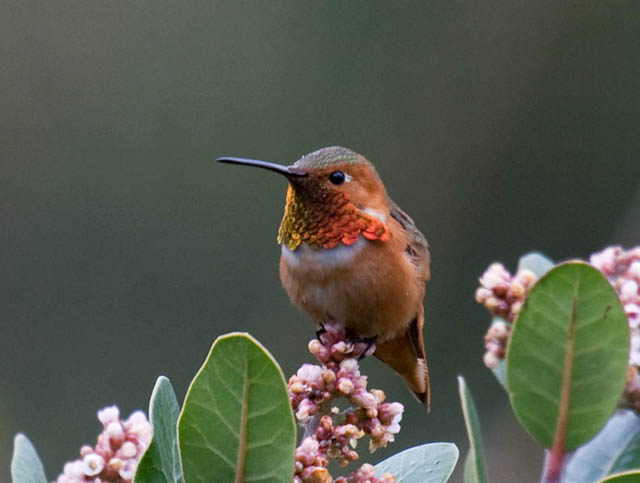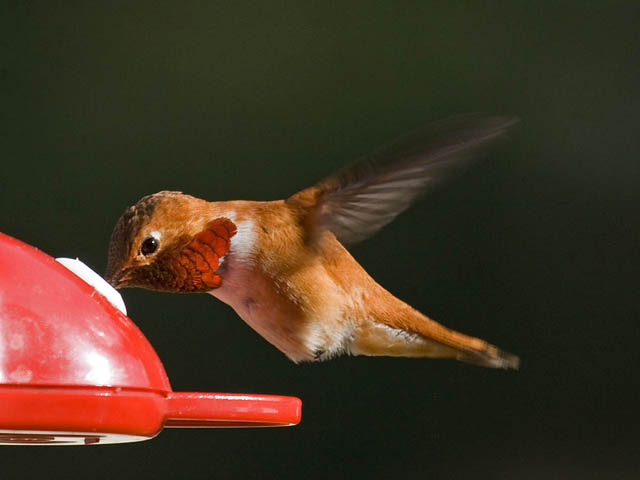Are you eagerly anticipating the return of those vibrant, tiny hummingbirds to your Virginia garden? Knowing exactly when to put out your hummingbird feeders can make a big difference in attracting these fascinating creatures.
Timing is everything, and putting out feeders at the right moment not only ensures you get a front-row seat to their delightful antics but also helps sustain their energy during migration. Imagine your backyard bustling with the fluttering of these jewel-like birds, each visit a testament to your perfect timing.
Curious about when to welcome these winged wonders? Let’s dive into the best time to hang your hummingbird feeders in Virginia, so you can enjoy their presence all season long.
Hummingbird Migration Patterns In Virginia
Understanding hummingbird migration patterns in Virginia is key to knowing the best time to put out feeders. These tiny birds follow distinct schedules, influenced by weather and food availability. Watching their movements can turn your backyard into a lively hummingbird hotspot.
Spring Arrival Times
Hummingbirds usually return to Virginia between late March and early May. The exact timing depends on the weather each year—warmer springs bring earlier arrivals. I’ve noticed that feeders set up by mid-April often attract the first visitors, giving you a head start on their feeding needs.
Look for ruby-throated hummingbirds, the most common species here. They travel alone and are eager to refuel after their long flight north. If you miss the early weeks, don’t worry—they continue arriving well into May.
Fall Departure Trends
In fall, hummingbirds begin their southward journey from late August through October. By early November, most have left Virginia to reach warmer climates. This period is crucial for feeding since they need extra energy for migration.
Keep your feeders up until you see no more hummingbird visits for a few days. Sometimes, a late straggler might stop by. Have you ever experienced that unexpected last visit? It’s a small reminder to keep feeders ready just a bit longer.

Credit: www.birdsandblooms.com
Ideal Weather Conditions For Setting Feeders
Choosing the right weather to put out hummingbird feeders helps attract these tiny birds. Ideal conditions make feeders more visible and accessible. Birds feel safer and more active in good weather. This increases your chances of seeing hummingbirds visit.
Temperature Considerations
Hummingbirds start returning to Virginia when daytime temperatures reach about 60°F. Cooler nights can still happen, but they can handle brief cold spells. Avoid placing feeders out too early in cold weather. Cold temperatures slow down hummingbird activity and feeding. Warm, steady days encourage hummingbirds to feed regularly. Watch local weather forecasts for consistent warm days.
Rain And Wind Impact
Heavy rain can wash away nectar from feeders quickly. Strong winds make it hard for hummingbirds to hover near feeders. Place feeders in sheltered spots to protect from rain and wind. Light rain usually does not stop hummingbirds from feeding. Calm, dry days are best for setting up feeders. This helps keep nectar fresh and birds comfortable.
Types Of Hummingbirds In Virginia
Virginia hosts a few types of hummingbirds that visitors and bird lovers often spot. Knowing these types helps you prepare and time your feeders well. Most hummingbirds in Virginia are small, colorful, and fast, making them a joy to watch.
Each type has its own habits and patterns. Some stay longer, some pass through quickly. Learning their differences helps you attract them better.
Ruby-throated Hummingbirds
The Ruby-throated hummingbird is the most common in Virginia. They arrive in early spring and stay through summer. Males have bright red throats that shine in the sunlight. Females and young ones have softer colors. These hummingbirds feed on nectar and insects. They prefer red flowers and feeders with sugar water.
Occasional Visitors
Virginia also sees other hummingbirds less often. These include the Rufous and Black-chinned hummingbirds. They usually travel through during migration times. Sometimes they stay a short while if food is available. These visitors add variety to the hummingbird watchers’ experience. They are rare and exciting to spot in the state.
Choosing The Right Feeder Placement
Choosing the right place for your hummingbird feeder can make all the difference in attracting these tiny visitors. Placement affects how often hummingbirds visit and how safe they feel while feeding. Paying attention to details like sunlight, shade, and potential threats will improve your chances of enjoying their vibrant presence daily.
Sunlight And Shade Balance
Hummingbirds love warmth but can get overheated quickly. Position your feeder where it receives morning sunlight to warm up but has shade during the hottest part of the day. This balance keeps the nectar fresh longer and makes the feeder inviting throughout the day.
Think about your yard’s natural light patterns. Does a tree cast shade in the afternoon? Could you place the feeder near a porch that blocks intense sun? These small choices can impact how often hummingbirds return.
Safety From Predators
Safety is a top priority for hummingbirds when choosing a feeding spot. Keep feeders away from areas where cats or larger birds can easily hide and pounce. Open spaces with clear sightlines help hummingbirds spot danger early.
Have you noticed where squirrels or other critters hang out in your yard? Avoid placing feeders close to their favorite spots to reduce stress on your hummingbird visitors. You want your feeder to be a safe haven, not a hunting ground.
Maintaining Feeders During The Season
Keeping your hummingbird feeders clean and fresh is key to attracting these tiny visitors all season long. Neglecting maintenance can lead to mold growth and harmful bacteria, which can deter hummingbirds or even make them sick. Regular care ensures your feeders remain a safe and inviting source of nourishment.
Cleaning Frequency
How often you clean depends on the weather and feeder use. In warm Virginia summers, clean your feeders every 2-3 days to prevent fermentation and mold. Cooler weather allows for a slightly longer interval, about once a week.
Rinse feeders with hot water and scrub all parts thoroughly. Avoid harsh chemicals; a simple mix of vinegar and water works wonders. Remember, leftover nectar can spoil quickly, so don’t let it sit for too long.
Nectar Preparation Tips
Making your own nectar is easy and healthier for hummingbirds than store-bought options. Mix one part white granulated sugar with four parts water. Boil the water first, then stir in the sugar until dissolved. Let it cool completely before filling your feeder.
Avoid using honey, artificial sweeteners, or red dye. These can harm the birds or encourage harmful mold growth. Changing nectar every few days keeps it fresh and appealing, especially during hot spells when it ferments faster.

Credit: www.birdwatchingdaily.com
Signs Hummingbirds Are Near
Knowing the signs that hummingbirds are near can help you decide the perfect time to put out your feeders in Virginia. These tiny birds don’t just appear out of nowhere; they give clear hints that they’re in your area. Paying attention to these signals ensures you attract them quickly and keep them coming back.
Visual Cues
You might spot flashes of bright colors darting around your garden. Hummingbirds often hover near flowers, showing off iridescent feathers that catch the sunlight. Look for quick, darting movements as they zip from plant to plant.
Another clue is seeing them visit natural nectar sources like trumpet vines or bee balm. If you notice a sudden increase in these birds around blooming flowers, it’s a strong sign they’re ready for feeders. Watching carefully can help you time your feeder setup just right.
Auditory Signals
Hummingbirds make distinct buzzing sounds with their wings, almost like a tiny motor running nearby. If you hear this high-pitched hum, you’re likely close to a hummingbird’s flight path. Sometimes, you can catch their sharp, quick chirps as they communicate or defend territory.
Try to listen during the early morning or late afternoon when they’re most active. These subtle sounds can alert you before you even see the birds. Have you noticed any unusual buzzing sounds in your garden lately?
When To Take Feeders Down
Knowing when to take down your hummingbird feeders in Virginia is as important as putting them out. Leaving feeders up too long can attract unwanted pests or cause issues for local wildlife. On the other hand, taking them down too early might mean missing some late migrants or resident hummingbirds. Let’s look at some clear signs and practical tips to help you decide the right time to remove your feeders.
End Of Migration Indicators
Pay attention to hummingbird activity around your feeders. When you notice a sharp decline in visits over several days, it’s a sign many birds have moved on.
In Virginia, most hummingbirds finish migrating by early October. If you see fewer hummingbirds and no new arrivals for a week or more, it’s likely safe to take feeders down.
Keep an eye on local birdwatching reports or apps like eBird. They can tell you if hummingbirds are still being spotted nearby, helping you avoid removing feeders too soon.
Winter Considerations
Virginia winters are generally too cold for hummingbirds to survive here, meaning feeders won’t be needed after migration ends.
Leaving feeders up in winter can freeze the nectar, which is harmful to birds. It can also attract ants, bees, or wasps looking for food, creating unnecessary problems.
If you want to keep feeders ready for early spring arrivals, store them indoors during winter. Clean and dry them thoroughly to avoid mold or bacteria buildup.

Credit: www.birdwatchingdaily.com
Frequently Asked Questions
When Should I Put Out Hummingbird Feeders In Virginia?
In Virginia, put out hummingbird feeders in early April. This timing matches the arrival of Ruby-throated Hummingbirds. Early feeding helps attract and support migrating birds during spring.
How Do Weather Conditions Affect Hummingbird Feeder Timing?
Warm temperatures above 60°F signal hummingbird arrival in Virginia. Avoid putting feeders out too early during cold spells. Consistent warmth ensures birds find your feeder easily.
What Is The Best Nectar Recipe For Virginia Hummingbirds?
Use four parts water to one part white granulated sugar. Boil the mixture to dissolve sugar fully. Cool before filling feeders. Avoid honey or artificial sweeteners; they can harm birds.
When Should I Take Down Hummingbird Feeders In Virginia?
Remove feeders by late October after hummingbirds migrate south. This prevents unwanted insects and protects birds no longer present. Clean feeders thoroughly before storing for winter.
Conclusion
Hummingbird feeders bring joy to many gardens. Start feeding when you see the first hummingbirds arrive. This usually happens in spring in Virginia. Keep the feeders clean and fresh for the birds’ health. Stop feeding when hummingbirds leave for warmer places.
Watching these tiny birds is a simple pleasure. Feeding them helps them stay strong during migration. Your effort makes a small but meaningful difference. Enjoy the bright colors and quick movements. Feeders create a special bond with nature nearby.

